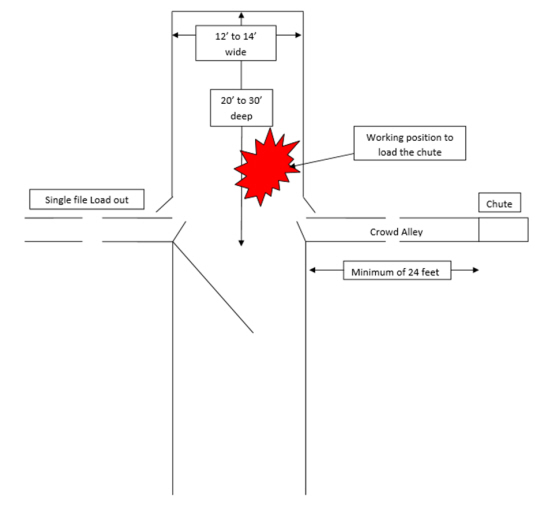



Facilities: Is It Time to Make a Change
Building or improving existing cattle handling facilities is a substantial investment for any cattle operation, according to Justin W. Waggoner, beef systems specialist at Kansas State University.However, this is an investment that can make a number of routine tasks easier, more efficient and safer.
In many cases, facility improvements must be made within the confines of an existing location or set of pens.
Very rarely, do we get the opportunity to build a new site and “build it right the first time”.
An important question to ask yourself is “what doesn’t work well or at all in your current facilities?”
In some cases, a very simple change such as adding an additional gate or turning it around, so it hinges on the other side of the alley can make a tremendous difference.
As many producers consider expanding their current operations, or consider entering a different segment of the industry, such as a backgrounding or stocker enterprise, a second question arises, “Will my current facilities meet the needs of the operation in the future?”
Planning a working facility that has the ability to expand requires additional and careful consideration.
A common misconception is that well designed working facilities have to be complex and consist of circular tubs and arcing alleyways. Producers should be aware that simple facilities can be just as effective as complex facilities.
One type of simple working facility that is gaining popularity among cattle producers is a “Bud box”. A “Bud box” is essentially a rectangular pen in which the alleyway leading to the chute is placed at a right angle at the point of entry into the box.
This type of facility is incredibly simple and highly effective. Cattle are brought into the box (only as many as will fit down the alley to the chute) and the position of the handler along the opposite side of the box effectively stimulates cattle to move past the handler and into the alley leading to the chute.
The effectiveness of the “Bud box” and the manner in which cattle seem to flow into the alley is a result of several basic principles of cattle behavior and movement:
1) Cattle want to move past the handler;
2) Cattle desire to be with other cattle (herd instinct); and
3) Cattle want to go back the way they came in.

Adapted from: Gill and Machen, “Designing a Bud Box”, Texas Agri-life Extension
As with any facility, the cattle handling skills and attitude of the handler are a major component.
If you have not had the opportunity to see a “Bud box” in action I would encourage you to do an on-line search for “Bud box cattle handling video”.
A well-designed “Bud box” will provide sufficient space for the number of animals that will fit down the alley leading in to the chute. A “Bud box” that is at least 12 feet wide and 20 feet deep should be adequate for most cow-calf operations.
For more information on constructing a “Bud box”, including suggested dimensions and other resources go to http://agrilifecdn.tamu.edu/beefinfo/files/2014/01/Designing-a-Bud-Box.pdf .
December 2014


